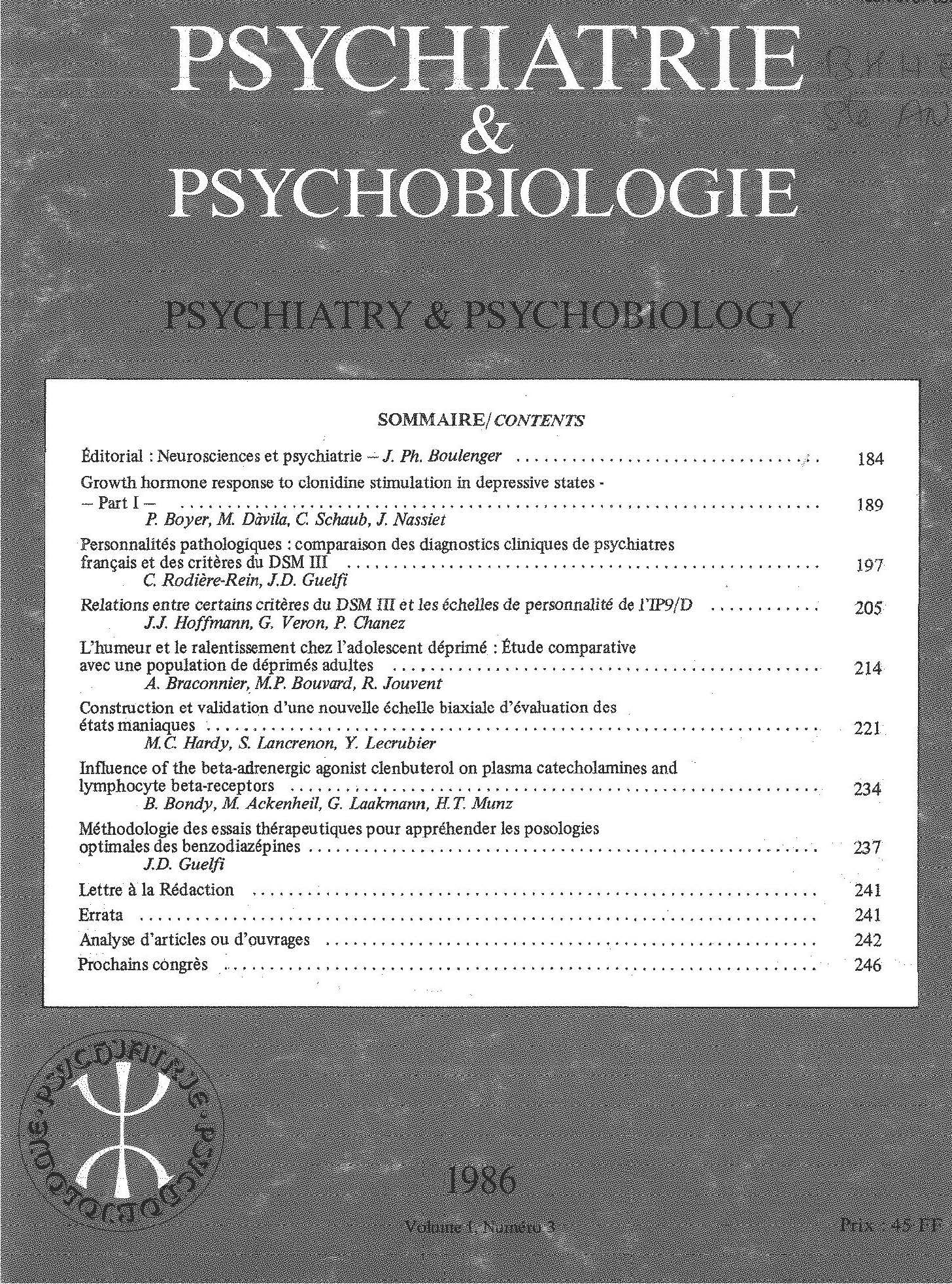Article contents
Une adaptation de l’échelle d’agressivité manifeste de Yudofsky sur une population de patients hospitalisés en unité de soins fermée
Published online by Cambridge University Press: 28 April 2020
Résumé
L‘évaluation objective des comportements agressifs en milieu hospitalier fait actuellement l’objet d’un regain d’intérêt. Pour disposer d’un instrument permettant la quantification précise de l’agressivité, nous avons choisi d’adapter l’≪Overt Aggression Scale≫ (OAS) de Yudofsky dans notre unité de soins. Cette échelle est constituée de 2 volets. Le premier se compose de 4 catégories de comportements agressifs: agressivité verbale, agression physique envers autrui, agression physique envers soi-même et agression physique contre objets. Le second volet comporte les interventions du personnel soignant. L‘adaptation de l’OAS fut effectuée en 2 phases successives. Dans un premier temps, nous avons évalué sa maniabilité et sa sensibilité de détection en l’utilisant durant un mois dans notre unité (Tableau I). Ensuite, afin de tester sa fidélité, une série de comportements agressifs filmés furent cotés par 8 observateurs. L‘analyse de la concordance de leurs jugements, realisée avec le W de Kendall, a donné des coefficients très significatifs en général (P < 0,001 pour 25 des 30 coefficients calculés, Tableau II) et particulièrement pour l’agressivité spécifiquement ciblée dans chaque séquence filmée (P < 0,001 pour 11 des 12 coefficients spécifiques calculés, Tableau II). Les résultats recueillis lors de ces 2 phases de travail permettent de conclure que l’OAS adaptée semble être un instrument maniable, sensible (sensibilité de détection) et fidèle. Une étude ultérieure nous permettra de tester la reproductibilité, caractéristique essentielle à l’utilisation de l’OAS dans une perspective longitudinale.
Summary
Many investigators actually take a growing interest in the objective evaluation of inpatients’ aggressive behavior. Yudofsky's Overt Aggression Scale (OAS) is a precise tool for rating aggressive behavior. OAS includes two parts. The first part is divided into 4 categories of aggressive behavior: verbal aggression, physical aggression against self, physical aggression against others and physical aggression against objects. The types of intervention constitute the second part of OAS. We adapted this scale in 3 consecutive steps. First, we translated OAS in French. The translated scale was then used during a one-month-period in our unit (Table 1). The scale proved easy to use and its sensitivity of detection was good. The last step was the measurement of its reliability. Eight observers were asked to rate video tape recorded aggressive behavior. The concordancy between their ratings was evaluated with Kendall's coefficient of concordancy (W). Twenty-five out of 30 statistical results were highly significant (P < 0,001 ; Table II). Specific types of aggressive behavior were clearly identified (P < 0,001 for 11 out 12 results; Table II). These data suggest that our French version of Yudofsky's OAS is easy to use, sensitive (sensitivity of detection) and reliable. Our next study will attempt to show that the ratings are reproductible and that this scale is accurate for a longitudinal use.
- Type
- Article original
- Information
- Copyright
- Copyright © European Psychiatric Association 1989
References
Références
- 1
- Cited by



Comments
No Comments have been published for this article.